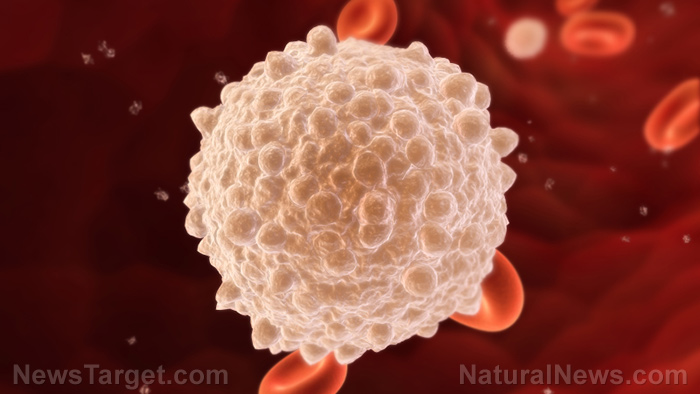
Hypereosinophilic syndrome – causes, side effects and treatments at NaturalPedia.com
Thursday, May 03, 2018 by Michelle Simmons
http://www.naturalpedia.com/hypereosinophilic-syndrome-causes-side-effects-and-treatments-at-naturalpedia-com.html

Hypereosinophilic syndrome is a group of rare blood disorders that occurs when the blood of a person has very high number of eosinophils. An eosinophil is a type of white blood cell that is involved in the immune system. People with this condition usually have more than 1,500 eosinophils per microliter in their blood for six months or more. In most people, there are only less than 500 eosinophils per microliter. These eosinophils go into different body tissues, which results in inflammation and eventually organ dysfunction.
The most commonly affected organs in this condition include the skin, lungs, heart, and nervous system.
Although it can occur at any age, it is more common in adults.
The cause of hypereosinophilic syndrome remains unknown.

Known side effects of hypereosinophilic syndrome
The known side effects of hypereosinophilic syndrome include skin rashes, fever, weight loss, and fatigue. If the liver and spleen are affected, an enlarged liver and spleen may be present.
Body systems harmed by hypereosinophilic syndrome
The body systems harmed by hypereosinophilic syndrome include the integumentary, respiratory, cardiovascular, and nervous systems.
List of foods or nutrients that prevent hypereosinophilic syndrome
There is no information on which foods or nutrients specifically prevent hypereosinophilic syndrome. However, there are some nutrients that can help lower high white blood cell count. These include vitamin C, which can be found in fruits like lemons, oranges, lime, papayas, berries, guavas, and pineapples, and in vegetables like cauliflower, broccoli, carrots, and bell peppers; antioxidants, which can be found in leeks, onions, garlic, tea, grapes, and other fruits and vegetables; and omega-3 fatty acids, which can be obtained from fatty fish like herring, trout, and salmon, as well as in flaxseed and walnuts.
Treatments, management plans for hypereosinophilic syndrome
Treatment options for hypereosinophilic syndrome include corticosteroids, drugs that control eosinophilic counts, and supportive care. Treatments also include immediate therapy, definitive therapies, and supportive therapies.
Where to learn more
- To stay healthy, get the blood moving
- 5 Healthy Snacks That Fight Heart Disease
- Eating lentils regularly could prevent the need for several medications: They nourish blood vessels and improve blood flow, pressure, circulation
- Strict eating and fasting schedule cleans the blood: Study finds it could clear out proteins that cause Huntington’s disease
- Encapsulated fruit and vegetable juices found to improve inflammation, blood lipids, weight in the obese
Summary
Hypereosinophilic syndrome is a group of rare blood disorders that occurs when a person’s blood has very high number of eosinophils.
Hypereosinophilic syndrome causes skin rashes, fever, weight loss, and fatigue.
Hypereosinophilic syndrome may affect the skin, lungs, heart, and nervous system.
Treatments for hypereosinophilic syndrome include
Hypereosinophilic syndrome immediate therapy, definitive therapies, and supportive therapies.
Sources include:
Tagged Under: Tags: Hypereosinophilic syndrome





